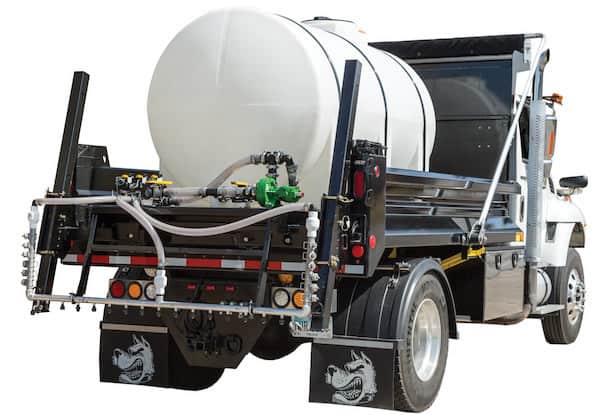You probably don’t need us to tell you that you can lower your operating costs and be more environmentally friendly by using less salt. That’s a no brainer. But finding the right equipment for your specific needs can be tough. That’s where Buyers Products can help with their SaltDogg liquid deicing system. They are all built to order no matter what size tank you need or type of drive you’d like – they can help.
Why Use Liquid Anti-Icing / De-icing?
Liquid application and pre-treating surfaces is the future (and present!) of managing ice. Brine can be sprayed to help prevent ice formation before the storm even hits. Using tons of salt is not only expensive and hard on the environment, but shortages have made it difficult some years to keep up. Using liquid brine solves these issues, and it works better to boot! If those aren’t enough reasons, also consider that clean up after snow and ice fall is much easier on pre-treated surfaces.

Buyers Products Liquid De-icing Systems
Whether you are looking for a 100 gallon de-icing tank or up to 5,000 gallons, Buyers Products can build a SaltDogg de-icing system just for you. They also have some standard variations, but don’t feel like you are limited because all of their anti-icing systems are built to order. They can use an electric drive, gas drive, or hydraulic drive so you aren’t limited in any way.
Plus you can get Buyers anti-icing systems with an automatic application rate control or manual.
- Automatic application rate control lets the vehicle operator select how many gallons of brine should be applied per lane mile and then the system does the rest. When paired with either a GPS or vehicle-based ground speed sensor the system will automatically adjust the application rate based on vehicle speed. This gives the operator precision control over brine coverage, meaning cleaner roads and less wasted liquid.
- Manual application control means the system is controlled directly by the vehicle operator. It must be turned on and off and have its flow rate set manually.
